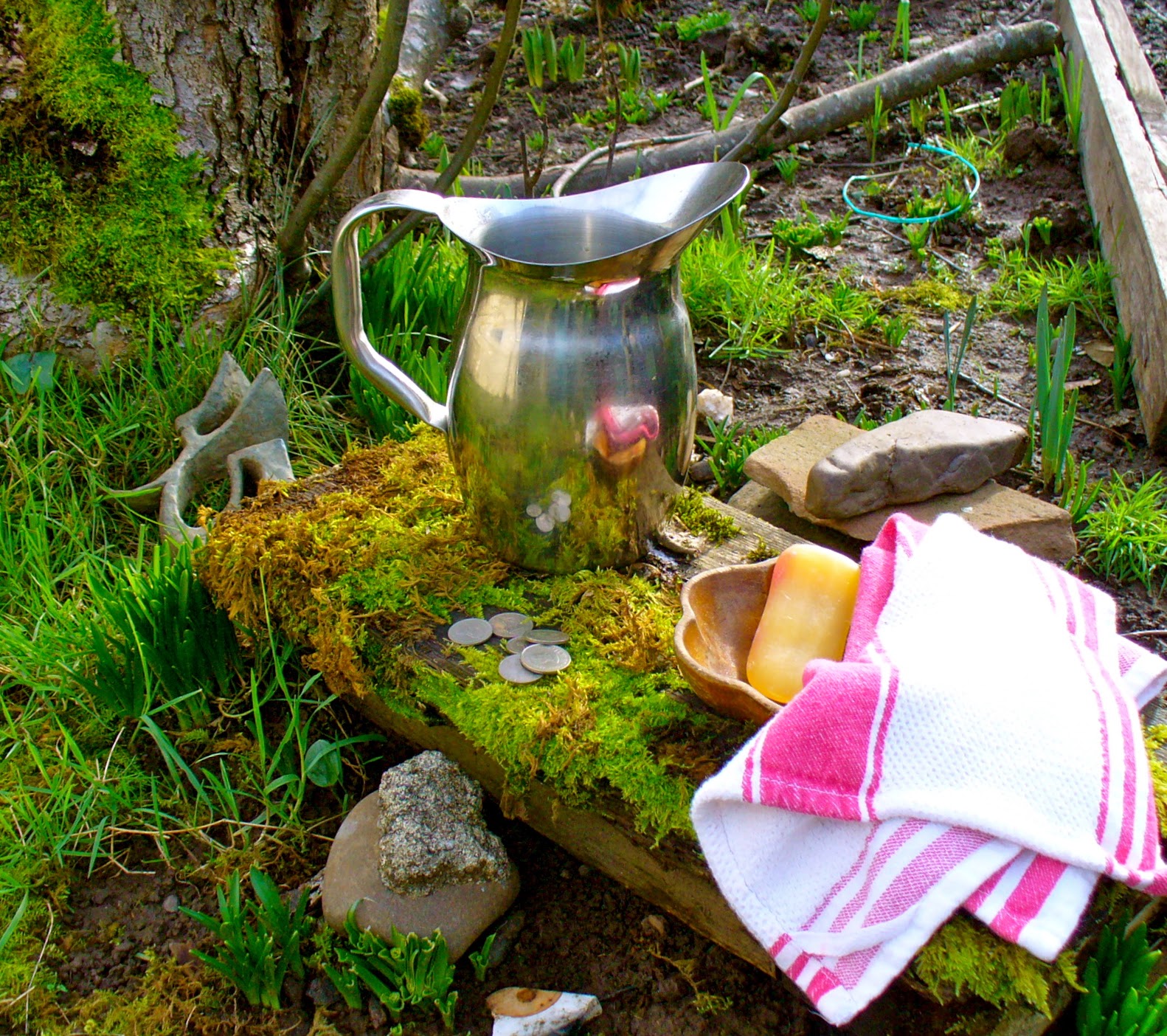Thorri is the name of the fourth month of winter in the old Icelandic calendar, and a blót is a feast. The Thorrablót can happen any time in the next several weeks. Thorri might have been named for Thor, the Norse god of thunder, or for a legendary King of Norway, but now in Iceland Thorri is known as "King Winter", depicted as an old grey man, kind to some and harsh to others. All of wintertime is referred to as King Winter in Iceland and in Norway... I guess with a winter as exceptional as theirs it’s not surprising that it has a personality!
Agenda:
1. Make a toast:
Although all of Iceland celebrates the Thorrablót as a feast, those of the Ásatrú faith- the Neopagans of Iceland- also practice it in a more ceremonial way, showing respect both to nature and to the spiritual and cultural traditions of the past.
An Ásatrú blót starts with a toast to the gods- the Ásatrú believe in the gods and spirits of the Nordic pantheon, and so they dedicate the Thorrablót to Thor, the god of Thunder, but might also toast any number of other gods and spirits: Skadhi, Sunna, the Jotuns, the Vanir, and others. The essence of the toast is to ask the gods for protection, for strength to weather the winter, and that they allow winter to be brief.
The beverage of choice for the Thorrablót toast is Brennivín (also called Black Death), drunk from a horn; but we will use cider, drunk from a glass.
My toast today:
May God protect us and keep us warm and dry.
May God provide shelter for those with no homes, and food for those who are hungry.
And may I find ways to help God with this task. Skål!
2. Have a Feast:
In the old days, this was a good time to use up the winter stores that were probably beginning to rot. Now Icelanders eat archaic "traditional" foods for Thorrablót that sound pretty horrible: Headcheese, rotten shark meat, dried horse, and worse sounding stuff.
Traditionally, the foods at a Thorrablót have all been preserved in some way- by pickling, salting, smoking, drying or fermenting- because traditionally nothing fresh was available in winter. The feast is accompanied with lots of drink, merrymaking, poetry readings, song, and dancing.
Foods in Iceland are strange to me at the best of times, and I will not be eating any rotten shark. Here are three Icelandic recipes that I found yummy- one pickled, one smoked, and one dried.
Niðursoðnar Rauðrófur (Pickled Beets)
Because of the long winter, all kinds of pickled vegetables are essential.
Ingredients:
 1- Scrub the beets well with a brush and cut off the ends. Place in a pot and fill with water until the beets are well covered. Cook until a fork can easily be pressed through, about 25 -30 minutes. Drain and rinse in cold water.
1- Scrub the beets well with a brush and cut off the ends. Place in a pot and fill with water until the beets are well covered. Cook until a fork can easily be pressed through, about 25 -30 minutes. Drain and rinse in cold water.2- Meanwhile, heat the vinegar and sugar just until the sugar dissolves.
3- When the beets have cooled enough to handle, peel off the skins and slice. Place into a jar with the vinegar and marinate for at least 30 minutes. Store in the refrigerator for up to 2 weeks.
Síldarsalat (Herring Salad)
Pickled herring is more popular in Iceland than smoked herring, but hard to find here. I settled for a can of smoked herring (a.k.a., kipper snacks).
This salad is surprisingly tasty, though not popular with my younger set.
Ingredients:
- 1 can of kipper snacks
- 1 sweet apple
- 3-4 slices pickled beet
- 1/3 c. mayonnaise (or part sour cream)
1- Cut the herring into small slices and place in a bowl.
2- Peel and cube the apple, and cube the beets. Add to the herring.
3- Add the mayonnaise and mix well.
Ávaxtagrautur (Stewed Dried Fruit)
This was the most popular with the kids!
 Ingredients:
Ingredients:- 1-1/2 c. mixed dried fruit – the usual Icelandic combination is prunes, apples, apricots, pears and peaches
- 1/2 c. sugar
- 1/4 c. cornstarch
- cream
Yield: Serves 6-

 1- Cut the dried fruit into small pieces with kitchen scissors. Soak in 4 c. water for 1 hour, then simmer until soft- about 40 minutes.
1- Cut the dried fruit into small pieces with kitchen scissors. Soak in 4 c. water for 1 hour, then simmer until soft- about 40 minutes.2- Add the sugar. Mix the cornstarch with cold water and add. Simmer until thick.
3- Serve hot or cold, with a dribble of cream.
3. Play Kubb:
 |
| Team One, minus the camera person. |
 |
| Team Two surveys the field. |



























